Abstract
An experiment was conducted to investigate the reduction of endogenous NO3−, which had been taken up by plants in darkness, during the course of the subsequent light period. Vegetative, nonnodulated soybean plants (Glycine max [L]. Merrill, `Ransom') were exposed to 1.0 millimolar 15NO3− for 12 hours in darkness and then returned to a solution containing 1.0 millimolar 14NO3− for the 12 hours `chase' period in the light. Another set of plants was exposed to 15NO3− during the light period to allow a direct comparison of contributions of substrate from the endogenous and exogenous sources. At the end of the 15NO3− exposure in the dark, 70% of the absorbed 15NO3− remained unreduced, and 83% of this unreduced NO3− was retained in roots. The pool of endogenous 15NO3− in roots was depleted at a steady rate during the initial 9 hours of light and was utilized almost exclusively in the formation of insoluble reduced-N in leaves. Unlabeled endogenous NO3−, which had accumulated in the root prior to the previous dark period, also was depleted in the light. When exogenous 15NO3− was supplied during the light period, the rate of assimilation progressively increased, reflecting an increased rate of uptake and decreased accumulation of NO3− in the root tissue. The dark-absorbed endogenous NO3− in the root was the primary source of substrate for whole-plant NO3− reduction in the first 6 hours of the light period, and exogenous NO3− was the primary source of substrate thereafter. It is concluded that retention of NO3− in roots in darkness and its release in the following light period is an important whole-plant regulatory mechanism which serves to coordinate delivery of substrate with the maximal potential for NO3− assimilation in photosynthetic tissues.
Full text
PDF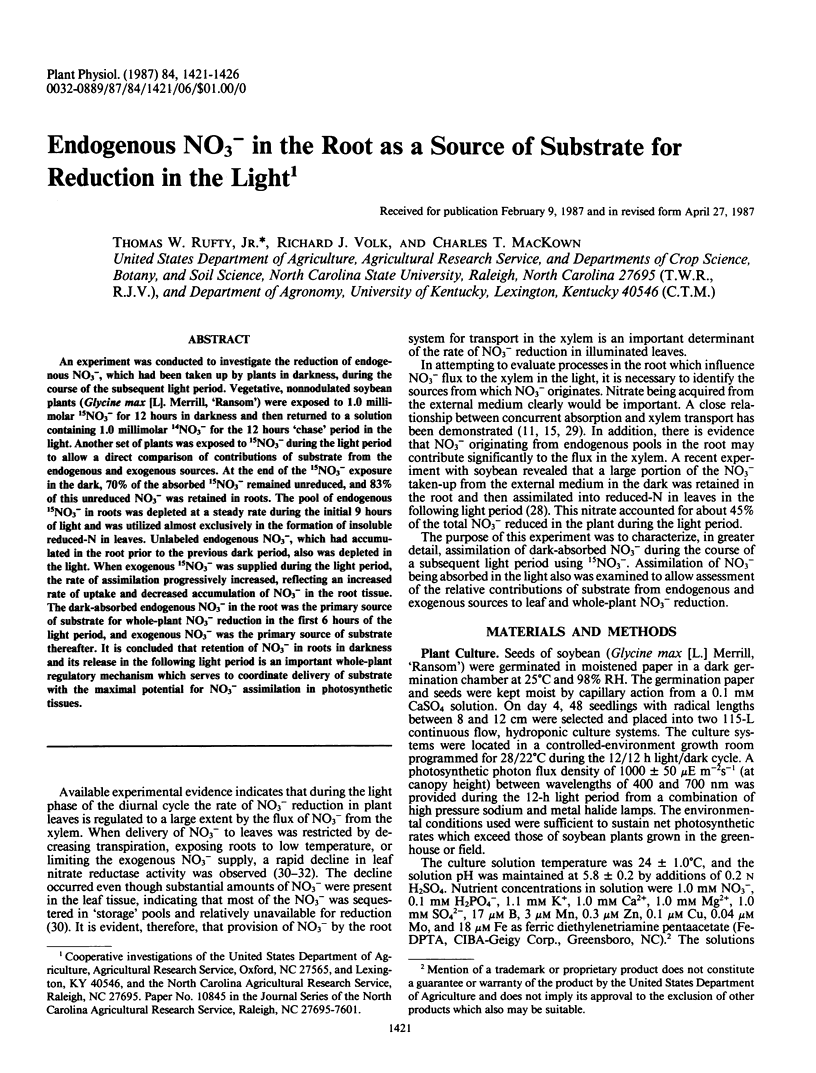
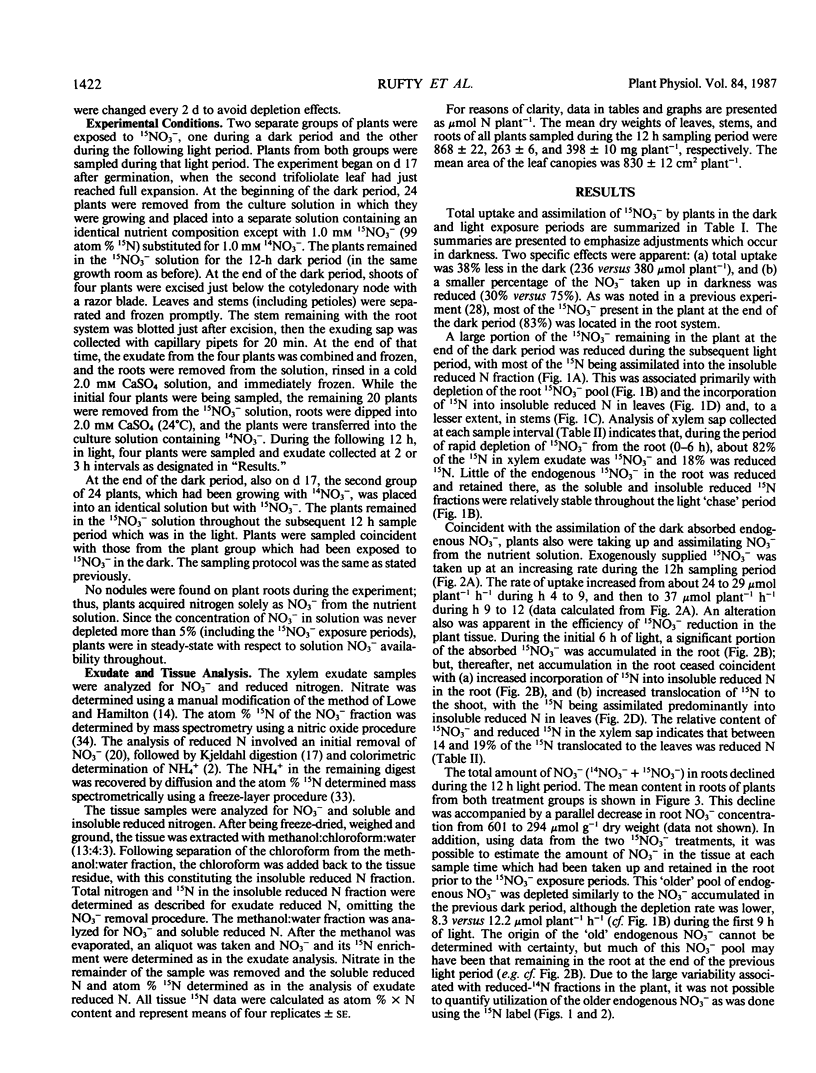
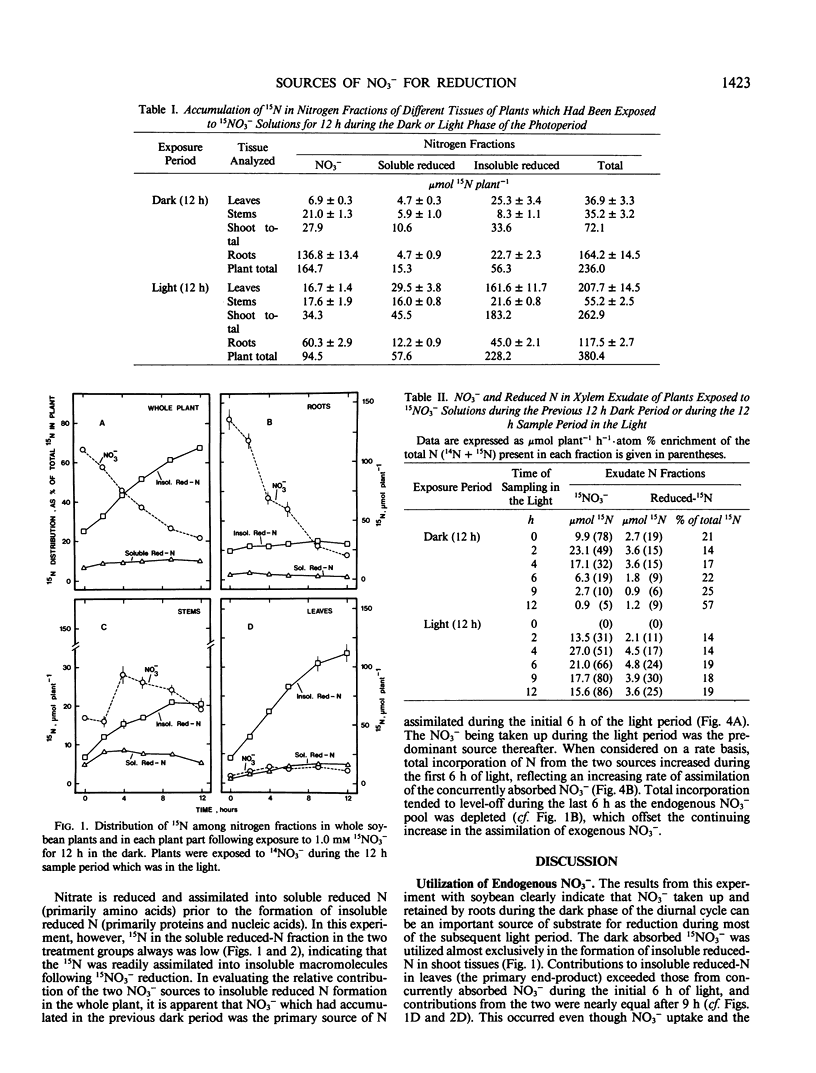
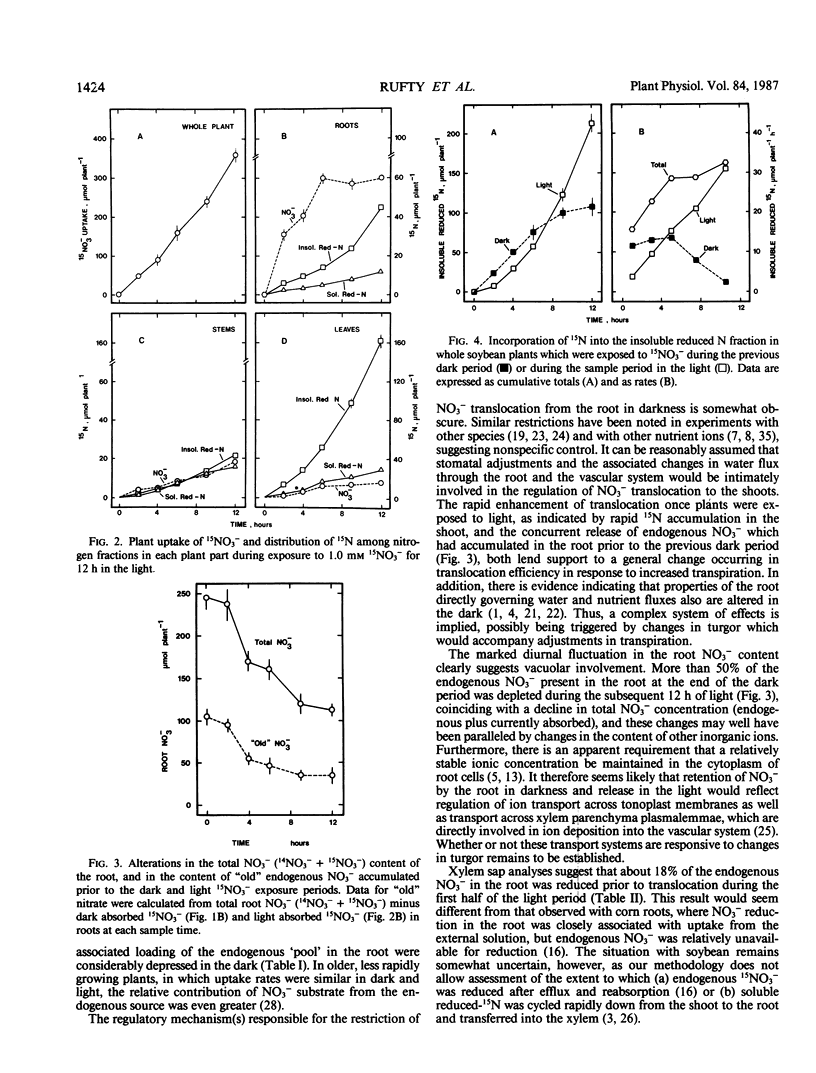
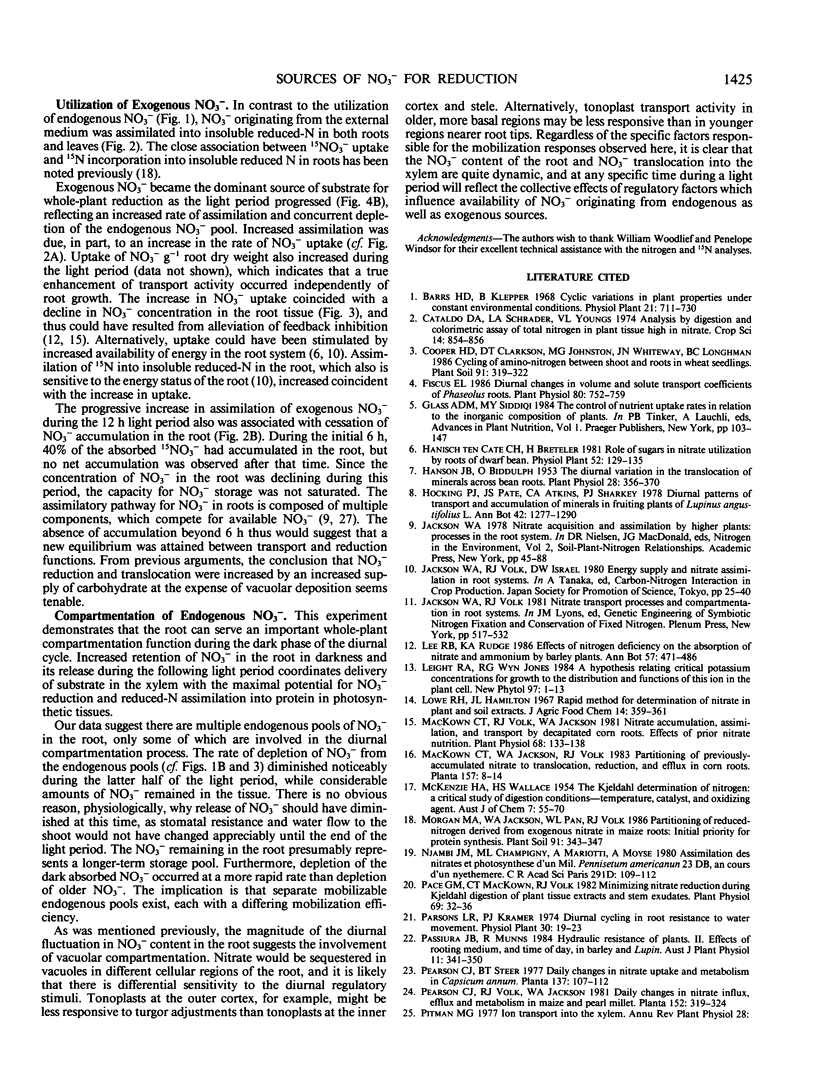

Selected References
These references are in PubMed. This may not be the complete list of references from this article.
- Fiscus E. L. Diurnal changes in volume and solute transport coefficients of phaseolus roots. Plant Physiol. 1986 Mar;80(3):752–759. doi: 10.1104/pp.80.3.752. [DOI] [PMC free article] [PubMed] [Google Scholar]
- Hanson J. B., Biddulph O. The Diurnal Variation in the Translocation of Minerals across Bean Roots. Plant Physiol. 1953 Jul;28(3):356–370. doi: 10.1104/pp.28.3.356. [DOI] [PMC free article] [PubMed] [Google Scholar]
- Mackown C. T., Volk R. J., Jackson W. A. Nitrate Accumulation, Assimilation, and Transport by Decapitated Corn Roots : EFFECTS OF PRIOR NITRATE NUTRITION. Plant Physiol. 1981 Jul;68(1):133–138. doi: 10.1104/pp.68.1.133. [DOI] [PMC free article] [PubMed] [Google Scholar]
- Pace G. M., Mackown C. T., Volk R. J. Minimizing Nitrate Reduction during Kjeldahl Digestion of Plant Tissue Extracts and Stem Exudates : APPLICATION TO N STUDIES. Plant Physiol. 1982 Jan;69(1):32–36. doi: 10.1104/pp.69.1.32. [DOI] [PMC free article] [PubMed] [Google Scholar]
- Rufty T. W., Israel D. W., Volk R. J. Assimilation of NO(3) Taken Up by Plants in the Light and in the Dark. Plant Physiol. 1984 Nov;76(3):769–775. doi: 10.1104/pp.76.3.769. [DOI] [PMC free article] [PubMed] [Google Scholar]
- Rufty T. W., Jackson W. A., Raper C. D. Nitrate Reduction in Roots as Affected by the Presence of Potassium and by Flux of Nitrate through the Roots. Plant Physiol. 1981 Sep;68(3):605–609. doi: 10.1104/pp.68.3.605. [DOI] [PMC free article] [PubMed] [Google Scholar]
- Shaner D. L., Boyer J. S. Nitrate Reductase Activity in Maize (Zea mays L.) Leaves: I. Regulation by Nitrate Flux. Plant Physiol. 1976 Oct;58(4):499–504. doi: 10.1104/pp.58.4.499. [DOI] [PMC free article] [PubMed] [Google Scholar]
- Volk R. J., Pearson C. J., Jackson W. A. Reduction of plant tissue nitrate to nitric oxide for mass spectrometric 15N analysis. Anal Biochem. 1979 Aug;97(1):131–135. doi: 10.1016/0003-2697(79)90336-1. [DOI] [PubMed] [Google Scholar]
- Wallace A., Soufi S. M., Hemaidan N. Day-night Differences in the Accumulation and Translocation of Ions by Tobacco Plants. Plant Physiol. 1966 Jan;41(1):102–104. doi: 10.1104/pp.41.1.102. [DOI] [PMC free article] [PubMed] [Google Scholar]


